Recent Water Damage Posts
Protect Yourself Against Water Damage By Knowing the Most Common Causes
3/13/2024 (Permalink)
Water damage in homes and businesses in State College and the surrounding areas can arise from various sources, often leading to costly repairs and restoration if not promptly addressed. Understanding the common causes can help in preventing potential damage.
Here are some of the most frequent culprits:
- Leaking Pipes: Pipes that burst or develop leaks from wear, tear, or freezing can cause significant water damage. Hidden leaks can also occur within walls, leading to mold and structural damage over time. Wintertime in Central PA is when we receive the most calls concerning burst or leaking pipes.
- Appliance Failures: Household appliances like washing machines, dishwashers, water heaters, and refrigerators can malfunction, causing significant water leaks. Hoses can become loose, or the appliances themselves might develop leaks due to aging or faulty connections. If you are heading out of town for any length of time, it is vital that you have someone you trust check on your home regularly to be sure none of your appliances are leaking. Also, don't leave the house with a load or dishes or laundry running, as tempting as that may be!
- Blocked Drains and Toilets: Clogged drains and toilets can lead to overflow, resulting in water leakage that can affect flooring, walls, and underlying structures. If you run into a serious clog, call a professional instead of trying to fix it yourself. We have seen serious water losses come from diy drain repairs.
- HVAC Issues: Air conditioners and heating systems that are not properly maintained can cause water accumulation, leading to leakage. The condensation lines can get clogged, or the drip pans can overflow, causing water to leak into the building structure. Be sure to clean your units at the beginning and end of each season of use.
- Faulty Water Heaters: Old or poorly maintained water heaters can rupture, releasing large amounts of water all at once and causing immediate flooding. If you suspect your aging water heater has seen better days, have it inspected by a licensed plumber.
- Severe Weather and Natural Disasters: Heavy rains, hurricanes, floods, and rapid snow melts are significant sources of water damage. These natural events can lead to water penetrating structures, causing extensive damage to buildings.
- Roof Leaks: Damaged or deteriorating roofs can allow water to seep into the home during rainstorms or from melting snow, leading to damage in ceilings, walls, and other areas. It's more cost effective to repair a roof than a roof and all of your home's contents. #costlyrepairs
- Poor Drainage Around the Building: Improper grading around a building's foundation can lead to water pooling and eventually entering the building, causing damage to the foundation and interior spaces.
- Sump Pump Failure: If a sump pump fails during heavy rain or flooding, water can overflow and flood the basement or crawl spaces, leading to significant damage. During Central PA's winter thaw and spring time rain, it is especially important to check on your sump pump regularly to be sure it is free of clogs and operating properly.
- Condensation: Areas with high humidity or spots in the home that remain cool and moist, like crawl spaces or basements, can have condensation build-up, leading to water damage over time. Eventually, you will experience mold growth that can impact your health.
- Overflowing Gutters and Downspouts: When gutters are clogged with debris, they can overflow and allow water to pool around the foundation, potentially leading to water intrusion and damage. While fall is the obvious time to think about cleaning your gutters, it is something that should be done year-round.
Understanding these common causes can help you take preventative measures to avoid the costly and inconvenient consequences of water damage. Regular maintenance checks, timely repairs, and proper installations are crucial in mitigating the risk of water-related damage.
While we hope that you never have to call us, we are Here to Help® if you do. Reach SERVPRO of Happy Valley directly at (814) 996-4603.
SERVPRO of Happy Valley is located off of College Avenue between Houserville and Lemont. Visit us at 2595 Clyde Ave, Suite 1, State College, PA 16801.
Long-Term Strategies to Protect Your Property from Water Damage
10/21/2023 (Permalink)
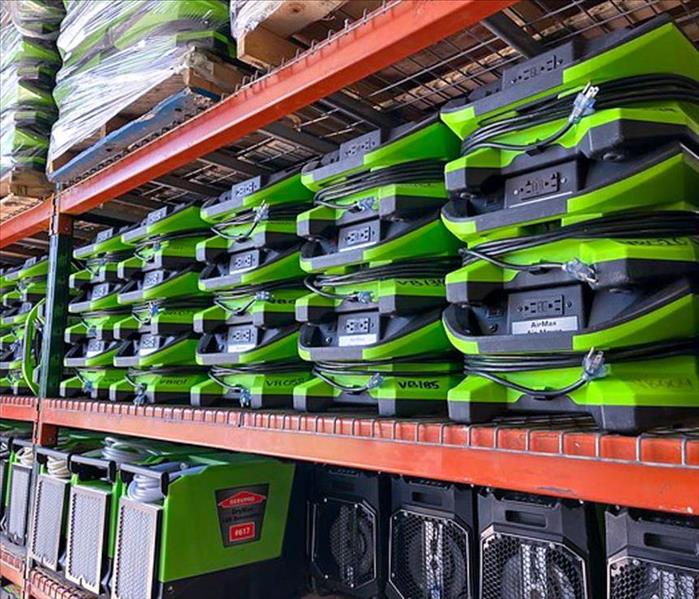 Water damage can be a homeowner's worst nightmare, causing extensive and costly repairs.
Water damage can be a homeowner's worst nightmare, causing extensive and costly repairs.
Water damage can be a homeowner's worst nightmare, causing extensive and costly repairs. While restoration after a water incident is crucial, implementing long-term strategies to prevent future occurrences is equally important. In this blog post, we will explore effective methods for water damage prevention beyond restoration, providing you with practical tips to safeguard your property.
Regular Maintenance Checks
- Plumbing system: Inspect your plumbing system regularly for leaks, loose connections, and corrosion. Fix any issues promptly to prevent water damage.
- Roof and gutters: Ensure your roof is in good condition and your gutters are clean and free from debris. Proper drainage is essential to avoid water seepage and roof leaks.
- Appliances: Pay attention to appliances that utilize water, such as washing machines, dishwashers, and water heaters. Check for leaks, replace old hoses, and schedule regular maintenance checks.
Proper Landscaping
Ensure your property's grading promotes water flow away from your foundation. Redirect downspouts and install appropriate drainage systems to prevent water accumulation. Plant trees and shrubs far enough from your foundation to prevent root intrusion that could lead to plumbing issues or foundation damage.
Installing and Maintaining Preventive Measures
Install a sump pump with a battery backup system in your basement or crawl space. Regularly test the pump and ensure the discharge pipe is clear of obstructions. You can also consider installing water leak detectors and automatic shut-off valves for early detection and prevention of leaks, especially in areas prone to water incidents such as basements or laundry rooms.
Proper Insulation and Ventilation
Adequate insulation throughout your property, including attics, walls, and crawl spaces, prevents condensation and the formation of moisture that can lead to water damage. Proper ventilation in bathrooms, kitchens, and other areas with high humidity levels helps reduce moisture buildup, preventing mold growth and water damage.
Educate and Engage
Its important to teach everyone in your household about water-saving habits, proper maintenance, and what to do in case of a water incident or leak. Consult with water damage restoration professionals who can provide expertise, conduct inspections, and recommend improvements to minimize the risk of future water damage.
By implementing these long-term strategies for water damage prevention, you can protect your property and avoid the costly and stressful process of restoration. Regular maintenance, proper landscaping, preventive measures, insulation, and ventilation are crucial investments that will help safeguard your home against water damage. So, take the necessary steps today and enjoy peace of mind knowing that you are proactively protecting your property from future water incidents.
What Can Cause a Flooded Basement?
7/27/2023 (Permalink)
A flooded basement is a homeowner's nightmare, causing significant damage. Understanding the common culprits behind basement flooding is crucial for prevention and prompt action. In this blog post, we'll explore various factors that can cause a flooded basement, ranging from weather-related issues to plumbing mishaps and structural problems. By identifying these causes, you can take proactive steps to safeguard your basement and prevent costly water damage.
Heavy Rainfall and Poor Drainage
One of the primary causes of basement flooding is heavy rainfall. When rainwater accumulates around the foundation of your home, it can seep into the basement through cracks, gaps, or faulty waterproofing. Inadequate or clogged exterior drainage systems, such as gutters and downspouts, can exacerbate the problem by directing water toward the foundation instead of away from it.
Ensure proper grading around your home, directing water away from the foundation. Clean and maintain gutters and downspouts regularly to ensure efficient water flow. Consider installing a sump pump and a perimeter drainage system to help redirect water away from your basement.
Plumbing Issues
Plumbing failures, such as burst pipes, leaking water heaters, or malfunctioning sump pumps, can quickly lead to basement flooding. A small leak or a sudden pipe rupture can release a significant amount of water, saturating your basement in a short period.
Regularly inspect your plumbing system for signs of leaks, corrosion, or wear and tear. Ensure that your sump pump is in good working condition and consider installing a backup battery or water-powered sump pump for added protection.
Sewer Backup
Sewer backups occur when the main sewer line becomes overwhelmed by excessive water or blockages, causing wastewater to flow back into your home. This can result in a hazardous and unsanitary situation, leading to basement flooding.
Install backflow prevention devices, such as check valves or gate valves, to prevent sewage from flowing back into your home. Regularly maintain your sewer lines and avoid flushing items that can clog the system.
Foundation Issues
Cracks in your foundation walls or floor can allow water to seep into your basement during periods of heavy rain or when the groundwater level rises. Poor foundation drainage, hydrostatic pressure, or inadequate waterproofing can contribute to basement flooding.
Inspect your foundation regularly for cracks or signs of deterioration. Address any foundation issues promptly, including repairing cracks and improving exterior drainage. Consider applying waterproof coatings or sealants to protect your basement from water intrusion.
Malfunctioning or Insufficient French Drains
French drains are designed to collect and redirect groundwater away from your foundation. If these drains become clogged, damaged, or insufficient in size, they may fail to effectively channel water away, leading to basement flooding.
Regularly inspect and maintain your French drain system, ensuring it is clear of debris and functioning properly. If needed, consult a professional to assess and improve the efficiency of your drainage system.
A flooded basement can result in extensive damage and pose risks to your home's structure and your family's health. By understanding the common causes of basement flooding, you can take proactive measures to prevent such incidents. Regular maintenance, proper drainage, foundation inspections, and addressing plumbing issues promptly are essential for protecting your basement from water damage. Remember, consulting a professional in case of significant water intrusion or persistent basement flooding is advisable to ensure comprehensive solutions and minimize the risk of future incidents.
Water Damage to your Electronics? Here’s what you should do.
3/12/2023 (Permalink)
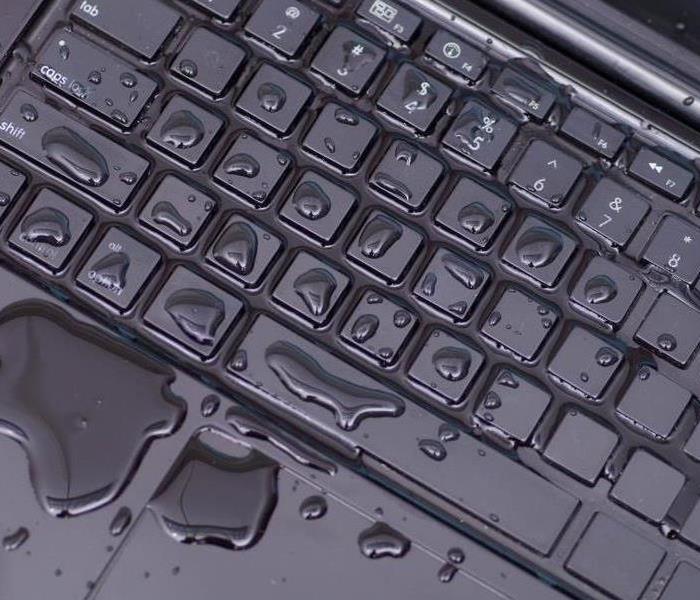 Water damaged electronics can be frustrating.
Water damaged electronics can be frustrating.
Electronics are a significant part of our lives, and they have become essential in our day-to-day activities. However, when they suffer water damage, it can be frustrating and costly to repair or replace them. Water damage is a common problem that can happen to anyone, and it can occur in various ways, such as accidental spills, dropping electronics in the pool, or exposure to rain. If your electronics have suffered water damage, here are some steps you can take to try and salvage them.
Turn off the Device Immediately
The first step you should take when your electronics suffer water damage is to turn them off. This will help prevent short circuits and other damage to the device's internal components. If the device is still on, turn it off immediately and disconnect it from any power source.
Remove any External Components
If your device has external components, such as batteries or memory cards, remove them immediately. These components can hold water and cause damage to the device's internal components.
Dry the Device
After turning off and removing the external components, dry the device as much as possible. Use a soft cloth or paper towel to remove any excess water from the device's exterior. You can also use a vacuum cleaner to suck out any water that might have seeped into the device's openings.
Use Rice or Silica Gel Packets
Place the device in a bowl or bag of uncooked rice or silica gel packets. These materials can absorb moisture, which will help dry out the device's internal components. Leave the device in the rice or silica gel packets for at least 24 hours.
Do Not Use Heat
Do not use heat to dry out the device, such as a hairdryer or putting it in an oven. This can cause more damage to the device's internal components.
Test the Device
After 24 hours, remove the device from the rice or silica gel packets and reinsert the batteries or memory card. Turn on the device and check if it's functioning correctly. If the device does not turn on or is not functioning correctly, do not continue to use it.
Contact a Professional
If your device is still not working correctly, it's time to seek professional help. Contact the device's manufacturer or an electronics repair shop. They will be able to diagnose the problem and give you an estimate of the repair cost.
In conclusion, water damage to your electronics can be a frustrating and costly problem. However, by following the above steps, you might be able to save your device from permanent damage. Remember, prevention is always better than cure, so always be careful around water when using your electronics.
Should I DIY Water Restoration?
2/10/2023 (Permalink)
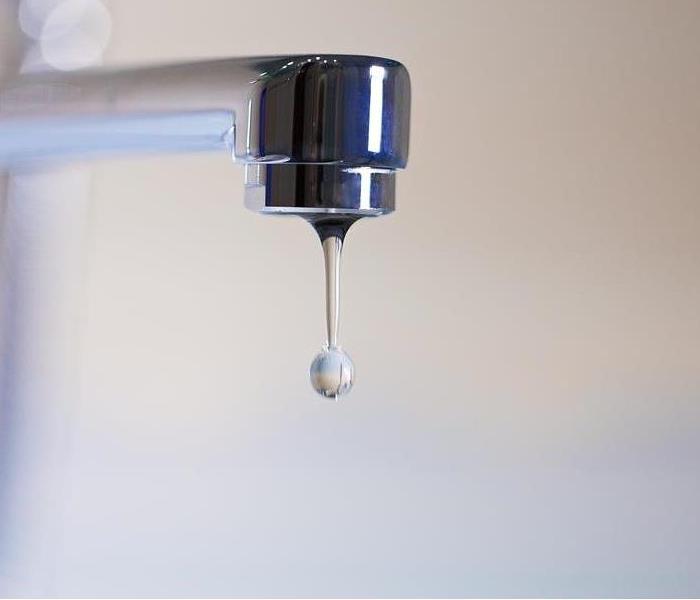 Should I DIY water damage? Call the professionals for your water restoration emergency
Should I DIY water damage? Call the professionals for your water restoration emergency
There is no doubt that water damage can be costly and time-consuming. Whether you're dealing with a burst pipe, sewage backup or some other kind of natural disaster, it's important to get professional help as soon as possible. Depending on the extent of damage, getting a second opinion before DIY would be a good idea.
Causes of Water Damage
Water damage can be caused by many things, including water leaks, flooding and pipe breaks. The most common type of water damage is from a pipe break that causes the inside of your property to become wet. Water damage behind the drywall can lead to extensive damage. Water will seep into the drywall and wood framing causing lots of damage. If you don't take care of water damage quickly, secondary damages can occur leaving your home in shambles.
When repairing any type of water damage it's important that you use a restoration and reconstruction company for cleanup and reconstruction to ensure the job is done right.
Unfortunately, it can also lead to issues like mold, rot and structural damage to the building itself if restoration isn't carried out correctly. The longer water is left in your home or business, the more damage it will do. The faster you act on restoring your property after a flood or leak, the less likely you are to face these long-term problems.
DIY Water Restoration
If you're thinking about taking on a DIY water restoration project, it's important to consider the costs and benefits of hiring a professional. While it can be tempting to save money by doing the work yourself, there are many reasons why hiring a professional is ideal. They know what they are doing. Water damage restoration professionals have been trained in how to properly assess and handle water damage situations. They understand the risks involved with working with electricity, mold remediation techniques, ventilation issues, etc.
They have access to specialized equipment needed for larger projects like commercial buildings where there may be multiple floors affected by flooding.
Commercial and Residential
If you've recently suffered a flood or water damage, we're here to help. Our team of trained experts provides fast and effective water damage restoration for both commercial and residential properties. We'll have your property back up and running in no time at all.
If you need help with insurance claims, we can assist with that as well! We know how frustrating it is when the process gets dragged out by an insurance company. We will make sure they pay out on their end so that you can move on with your life without worrying about money issues.
Properly Trained
If you're not trained in how to properly clean up after a flood or leaky pipe burst, it may be difficult for you to recognize signs of secondary damages. SERVPRO of Happy Valley is properly trained in the water restoration industry and have the experience and expertise to get the job done right. Give us a call at the first sign of water damage to prevent secondary damages of DIY.
Tips for Filing a Water Damage Claim
11/8/2022 (Permalink)
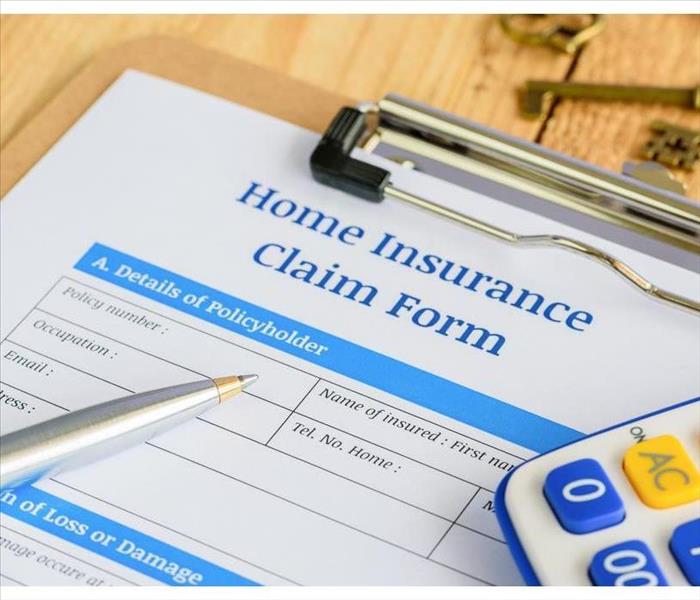 Filing a water damage claim
Filing a water damage claim
The Best Ways to File a Water Damage Claim
Water damage is a nightmare. It can be difficult to prepare for and even more challenging to deal with. If you find yourself in this situation, there are some steps that you can take to help make the process less stressful on everyone involved.
Notify Your Insurance Company Right Away
Notifying your insurance company as soon as possible is the first step in filing a water damage claim. You should have already made sure that it’s covered by your policy before you start cleaning up any messes, so having to go through that process again is no fun at all.
When you call, be prepared to answer questions about what happened and how much damage has been done. Your agent or company will also want to know if there are any witnesses who can corroborate what happened. Keep your policy number handy for reference; it greatly speeds up the process of filing a claim!
Stop the Water Damage If You Can
If you can, shut off the water supply. If you're able to stop the water from flowing, it could prevent further damage and help you save on repairs. To shut off a faucet, turn the handle clockwise until it clicks. You can also use a wrench and unscrew it from its base.
If turning off your faucet didn't work—maybe because there's no handle or knob—you should try to contain as much water as possible by using towels or rags. Once you've got rid of as much liquid as possible, get in touch with your insurance professional for help filing a claim so that we can come assess the situation and get restoration underway as quickly as possible.
Document the Damage
Before you start filing a water damage claim, it's important to document the damage and try to get a sense of how much it will cost to fix everything up. For example, if there was water in your home that damaged your furniture and other items, take photos of each item with a list of damaged items—and keep track of the value of each item too! If possible, take pictures of any receipts for things you've purchased (like food or clothing) to replace some (or all) of what was ruined by floodwater. This will help bolster your case when submitting a claim later and make it easier for an adjuster from your insurance company to assess exactly how much money is owed out-of-pocket.
Reestablish Access To Your Home
- Open all doors and windows to allow the water to evaporate.
- Use fans to speed up the drying process.
Record Anything That Was Damaged and Its Value
The next step is to make a list of everything that was damaged and its value. This will help you when filing your claim with the insurance company or adjuster, because it gives them an idea of how much money you need from them to cover the damages. You should also save receipts for any items that you replace, as well as receipts for any repairs made to your home.
Never Throw Anything Away Until the Insurance Company Tells You To
When dealing with your insurance company, it's important to remember that they're not on your side. You're paying them for the service of helping you file a claim and recover from damages—not being an ally in the process. The single most important thing to remember is this: don't throw anything away until the insurance company tells you to. Even if it seems like nothing is salvageable, keep it in storage until they tell you otherwise.
Be Sure to Keep Receipts For All Expenses You Have Related To the Loss, Such as Food and Lodging
If possible, keep receipts for all expenses you have related to the loss. If you rented a hotel room or apartment after your home was damaged, include any charges you make to your credit card and write down the date that each charge was made. If you used a mobile banking app to pay for food or gas while away from home, add those purchases as well.
Steps You Can Take To Get Your Life Back on Track after Water Damage
Here are some tips on how to go about filing a water damage claim:
Make sure you’re covered. You should talk with an insurance agent before your home experiences a major loss, so that when the time comes, you’ll be ready to file a claim.
Start by taking pictures and video of the affected areas. This will help provide evidence and help in determining the extent of damage done by water.
Contact an independent adjuster or claims handler if your insurance company does not cover all costs associated with repairing your property after a flood. The adjuster will come out to assess what repairs need to be made and determine whether or not they can be completed within certain parameters set by their company's policyholder agreement.
Water damage is no laughing matter, and it’s important that you take the right steps to protect yourself and your belongings. It can be tough to deal with this kind of loss, especially if it happens when you least expect it. But don’t worry—we’ve got your back! With these tips in mind, hopefully you’ll be able to get back on track even faster than before.
How to Fix the After Affects of Burst Pipes
10/7/2022 (Permalink)
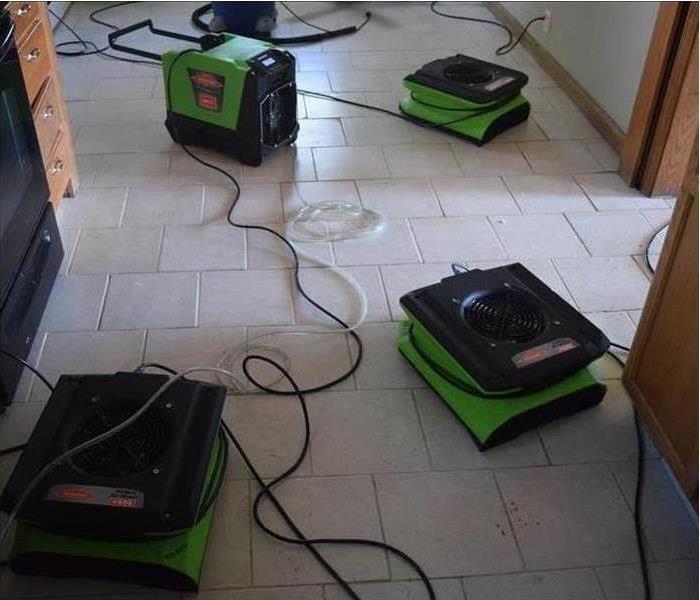 Water Damage cleanup in State College, PA
Water Damage cleanup in State College, PA
In 5 Easy Steps, Resolve the Consequences of Bursting Pipes
Bursting pipes can cause flooding and damage in your State College, PA, business. If the water isn't swiftly dealt with, problems such as mold and structural deterioration can arise. Follow these simple steps to begin the cleanup process and prevent further damage.
1. Cut Off Electricity and Water
Cut off all water to the problem area. If you don't have access to water control, immediately contact the person who does. You should also shut off electricity to water-affected areas. But don't touch or approach electrical equipment already exposed to water, as it may produce an electric shock.
2. Hire Professional Help for Bursting Pipes
Contact commercial building restoration experts to initiate water removal and prevent secondary damage such as mold. The restoration team will assess the damage and form a plan to help restore your business to its pre-flood condition. Hiring a professional plumbing service to fix broken pipe issues is also recommended rather than attempting to fix them yourself.
3. Avoid Unsafe Areas
Broken pipes may cause flooding and water-logged ceilings or floors. Do not enter these areas, as they may collapse and cause injury.
4. Protect Furniture and Appliances
Protect furniture legs from water-damaged flooring by placing wooden blocks or aluminum foil beneath them. Electronics and water-sensitive objects such as paintings should be stored in a dry place away from flooded areas.
5. Remove the Water
Removal of water damage is best left to professionals. Enlist the services of water mitigation experts to help safely and efficiently return your business to its pre-damaged condition using pumps and other specialized equipment. While you wait for experts to arrive, use towels or mops instead of vacuums to remove water from floors. Electronics, especially those connected to an outlet, are more likely to deliver an electric shock when exposed to water.
Flooding from busted pipes may cause structural damage, odors, and even mold if not quickly resolved. Follow these guidelines to start confidently resolving the aftereffects of bursting pipes.


 24/7 Emergency Service
24/7 Emergency Service




